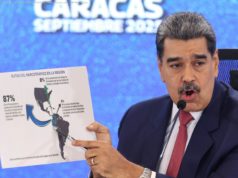When you only sleep in short bursts every second counts, but one around-the-world sailor is willing to sacrifice shut-eye to save the planet.
It is so remote, the nearest humans are said to be astronauts on the International Space Station.
Sehested spends two hours a day during his precious four-hour «off-watch» — when he’s not on deck racing the boat — operating a machine which takes water samples during the 45,000-mile 11-leg around-the-world race.
«If I can sacrifice a bit of sleep and people can stop using single-use plastic and dumping it in the ocean, I think it’s all worth it and I’m happy to sleep after the race,» he told CNN Sport by phone from a race stopover in Newport, RI.
«It’s not taking any of my time sailing the boat, it’s just taking half of my off watch but it’s for a good cause, right?»
Plastic pollution in the oceans is a hot topic on the environmental agenda. According to the Plastic Oceans website, 550 million plastic straws are thrown away every day in the US and the UK, while worldwide more than 500 million plastic bottles are used every year and more than one trillion plastic bags are discarded.
A 2016 report by the World Economic Forum (WEF) and the Ellen MacArthur Foundation (EMF) said that if this trend continues at the same rate, there will be more plastic than fish in the ocean (by weight) by 2050.
According to the Volvo Ocean Race findings, there were between nine and 26 particles of microplastic per cubic metre near Point Nemo. Nearer to Cape Horn, off the tip of South America, measurements increased to 57 particles per cubic meter.
As well as polluting the water, microplastics are also ingested by fish, other sealife and birds, and this plastic then re-enters the human food chain to be eaten by us.
‘Pristine waters’
Sehested, and his counterpart on race rival Turn the Tide on Plastics, collects samples at the same time as he runs the water-maker which turns salt water into fresh water. The incoming sea water flows through micro-filters which are later analysed by shore-based scientists to determine levels of microplastics, temperature, salinity, CO2 levels and algae content. He takes GPS readings of each sample so analysts can chart water quality around the world.
«It is a tricky job when it’s super windy and there are massive waves,» adds Sehested, whose Team AkzoNobel crew set a race record for the furthest distance sailed in 24 hours — 597.03 nautical miles (1,105.6 kilometers) — on leg nine from Newport to Cardiff, UK
«It’s not fun to work downstairs with your head down when you should be sleeping — you can get seasick pretty easily — but it’s important for us and for the race and the future of the race that we do put some focus on this thing.»
Dr. Soren Gutekunst of GEOMAR Institute for Ocean Research Kiel, analyzed the samples at a laboratory in Kiel, Germany.
«This is the first ever data that the scientific community has been able to analyse from a relatively inaccessible part of our blue planet,» he told the race website.
«Unfortunately, it shows how far and wide microplastics have penetrated our vast oceans and that they are now present in what, until now, many have considered to be untouched, pristine waters.»
The highest levels of microplastic found so far in the race was 357 particles per cubic metre recorded from the South China Sea, east of Taiwan. It’s an area that feeds into the Great Pacific Ocean Gyre — one of the earth’s five huge areas of circulating current and winds in which trash gathers.
«In Asia it’s pretty much plastic bottles and cups and straws and plastic bags and clothing and you see that every day,» says Sehested, who made his debut in the biennial Volvo Ocean Race in 2014-2015.
«Back in the day we only saw it in crowded areas like Asia but unfortunately it’s now all over the world. We do see plastic in the Southern Ocean — not as often but maybe once or twice a day.»
‘Amazing oceans’
Alongside the hard science, Sehested says his crew have noticed a lack of wildlife on their current circumnavigation.
«We’re talking about it more or less every leg, especially the older guys like Chris (Nicholson) and Jules (Salter) who have done the race many times,» he says.
«They tell us stories of massive packs of dolphins and whales and other wildlife, but this race we haven’t seen much. I don’t know if it’s just a coincidence, but it’s definitely something we talk about and they think is a concern.»
Sehested adds: «As a person it’s hurting and you’re getting a bit nervous about the planet and the future. As a sailor, a big part of the reason for doing this race is we get to go around the world seeing some amazing oceans and amazing landscapes.
Visit CNN.com/sailing for more news, features and videos
«But if in 50 years this race is all about going around and seeing plastic and pollution and smog and fog I’m not sure this race is so much fun to do.»
The 2017-2018 Volvo Ocean Race began in Alicante, Spain in October and finishes in The Hague, Netherlands in June.






